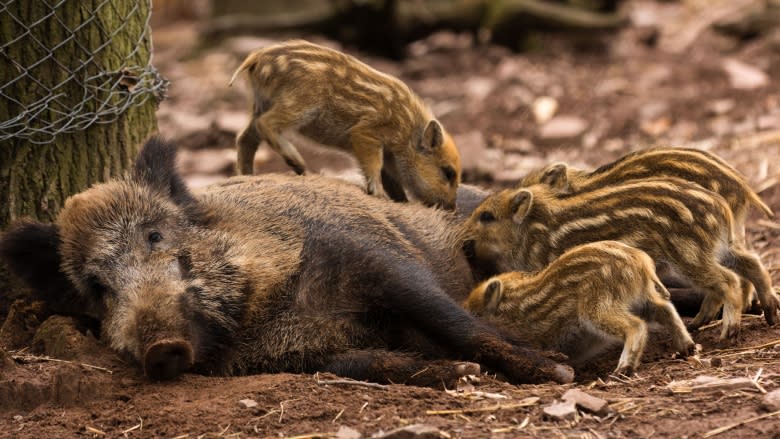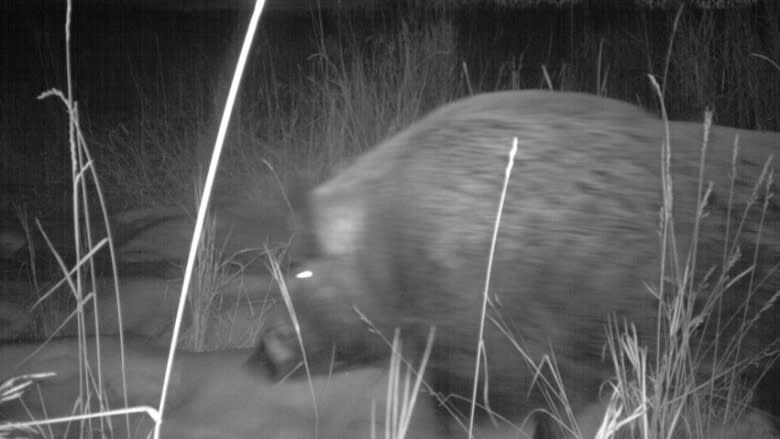Wild boars on the loose in Ontario are likely homegrown, says official
There's no need for a posse of Ontario hog hunters just yet, but the province needs to be vigilant in tracking wild boars on the loose because the tough, dangerous creatures are considered an invasive species.
That's the word from Environmental Commissioner of Ontario Dianne Saxe. She says Ontario cannot blame Manitoba and Quebec for any wild boars wreaking havoc on crops; eating smaller creatures and endangering domestic swine by spreading disease and even posing a threat to humans.
According to the Ontario natural resources and forestry ministry, a wild boar may weigh as much as 90 kilograms, can be dark grey, black and brown, have thick, bristly fur, and tusks.
In the last few years, there have been sightings of wild boars, likely ones that have escaped from licensed farms, in southern Ontario.
Saxe told Metro Morning that wild boars are raised on Ontario farms for meat and sport hunting and the beasts now on the loose are most likely homegrown or were transported here, she said. But she noted there is the possibility that some wild boars may have migrated to Ontario from the Prairies, which have wrestled with the problem for years.
She said keeping track of the beasts is important because of the damage they can do. One was killed by an Ontario conservation officer in 2015.
"They are enormously destructive," she said. "They spread disease. A single boar can basically rototill four hectares of sensitive land and destroy everything in it. They will eat ground-dwelling birds and mammals. They will eat small deer. They will eat small livestock. And they are also reasonably happy to gore humans, given the opportunity."
"We're very aware of them as a significant invasive species because of the enormous damage they do in other places."
Wild boars cause significant damage in U.S.
A 2015-2016 report issued by her office notes that wild boars are a major problem in the U.S.
"Wild boars, also known as feral pigs, cost $1.5 billion every year in damage and control costs in the U.S. Probably first brought to North America by Spanish explorers, wild boars have spread to at least 39 states over the past 30 years, causing damage to crops, property and natural resources, and even killing young livestock," it read.
"They also carry diseases that threaten other animals and people, destroy natural habitats by rooting, wallowing and grazing, and compete with native wildlife."
In a September 2014 memo to the United Counties of Prescott and Russell in southeastern Ontario, the Ontario natural resources and forestry ministry authorized private landowners and hunters with small game licences to kill feral wild boars under the Fish and Wildlife Conservation Act.
Saxe said her office encourages Ontario residents, who are not licensed hunters or landowners defending property, to report sightings to the ministry.
"It's really important that they be detected and as much as possible eradicated."
As with any invasive species, Saxe said the best way to prevent them from spreading in the wild is not to bring them here in the first place. Once here, however, small populations need to be killed before they become endemic, she said.
"Well, they're quite dangerous, unless you happen to be armed and skilled," she said.
The ministry was unable to provide an estimate of the numbers of wild boars on the loose in the province.



